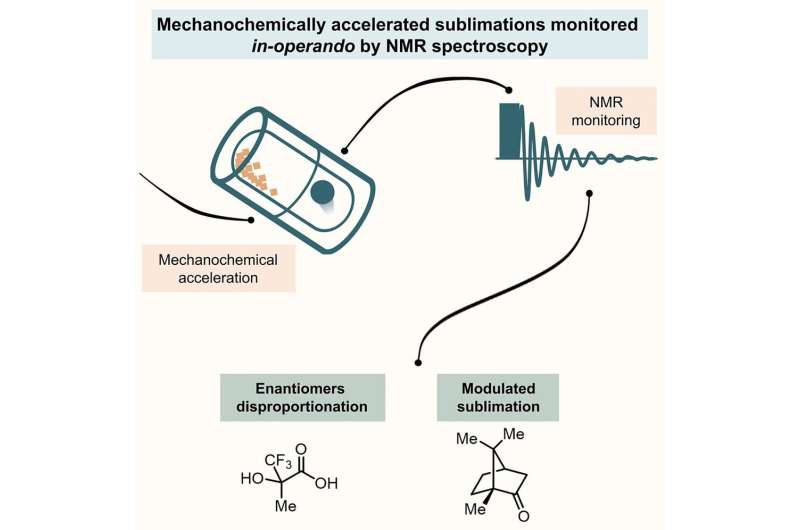April 17, 2023 report
This article has been reviewed according to Science X's editorial process and policies. Editors have highlighted the following attributes while ensuring the content's credibility:
fact-checked
peer-reviewed publication
trusted source
proofread
Using a ball mill to speed up sublimation for testing gas interactions

A team of chemists affiliated with several institutions in Germany has found that using a ball mill can speed up sublimation needed for testing gas interactions. In their study, reported in the journal Chem, the group tested the use of a ball mill to see how it would impact sublimation.
A ball mill is a device with a spherical chamber into which heavy balls made of steel or other materials are placed. The chamber is connected to other parts that turn the chamber. When other materials are placed into the chamber with the balls and the chamber is turned, the balls are pulled up the walls of the chamber until gravity takes over, at which point they fall, crushing the other material.
In this way, as the chamber continues to spin, the secondary material can be crushed to produce a powder. In this new effort, the team looked to use the ball mill in a new way—to speed up sublimation, in which a material changes from a solid to a gas without first becoming a liquid. There are occasions when chemists wish to sublimate a material to a gas and then combine that gas with another gas to form a new material or to incite a reaction. Unfortunately, the process of sublimation is generally pretty slow, so the team wanted to test the idea of using a ball mill.
In their work, the researchers added new components to the spherical chamber—inlets and exits for the gas. In their work, that meant argon and nitrogen. This allowed a steady stream of new gas to be injected into the chamber as gas was being sublimated from test materials as the chamber was spun. The mix of gases could then be continually vented from the exit valve to a secondary chamber where it could be tested using NMR spectroscopy.
Testing of several materials showed that the process worked as hoped—using the ball mill increased the rate of sublimation for all those tested, though to differing degrees, allowing for a constant stream of mixed gas to exit the chamber, ready for use in a desired application.
More information: Francesco Puccetti et al, NMR in operando monitoring of mechanochemically accelerated sublimations, Chem (2023). DOI: 10.1016/j.chempr.2023.02.022
Journal information: Chem
© 2023 Science X Network




















